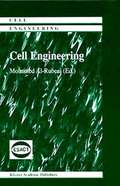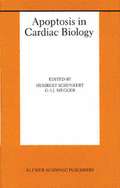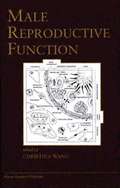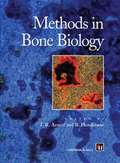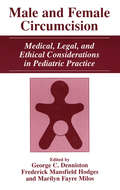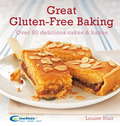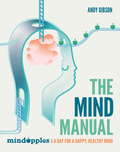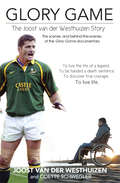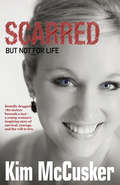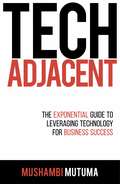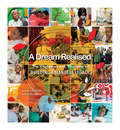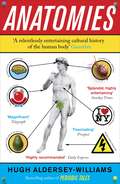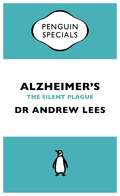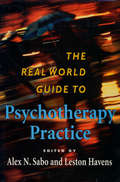- Table View
- List View
Cytokines, Stress, and Depression (Advances in Experimental Medicine and Biology #461)
by Robert Dantzer Emmanuelle E. Wollman Raz YirmiyaCytokines had been characterized in the early eighties as communication mole cules between immune cells, and between immunocytes and other peripheral cells, such as fibroblasts and endothelial cells. They play a key role in the regulation of the immune response and the coordination of the host response to infection. Based on these biological properties, nobody would have predicted that one decade later cytokines would burst upon neurosciences and permeate into several avenues of current research. In neurology, the connection between cytokines and inflammation, and the demonstration of a pivotal role of some of these molecules in cell death by apoptosis, prompted the investigation of their involvement in several neurological diseases involving an inflammatory component, including multiple sclerosis, brain trauma, stroke, and Alzheimer's disease. This movement started in the late eighties, and the corresponding field of research, known as neuroimmunology, is presently booming. In psychiatry, however, the relationship between cytokines and mental disorders was much less evident and took longer to materialize. The first indication that cytokines might be involved in psychopathology came from cancerology and internal medicine.
Cell Engineering (Cell Engineering #1)
by Mohamed Al-RubeaiIntegrating advances in molecular biology into bioprocesses presents a continuous challenge to scientists and bioengineers. This series is conceived to help meet this challenge. It examines and assesses the feasibility of new approaches for the modification of cellular function such as gene expression, protein processing, secretion, glycosylation, immortalisation, proliferation, and apoptosis as well as the systematic study of the metabolic genotype-phenotype relationship. The series provides detailed coverage of the methodology for improving cellular properties of cells used in the production of biopharmaceuticals, gene and cell therapies and tissue engineering. It also seeks to explain the cellular mechanisms underlying in vitro physiological activity and productivity. This volume, which is based on presentations at the `European Workshop on Animal Cell Engineering' held in Costa Brava, Spain, contains a collection of chapters relating to cellular function and modification by leading authorities in several different areas of basic research and the biopharmaceutical industry.
The Treatment of Glomerulonephritis (Developments in Nephrology #40)
by C. D. PuseyGlomerulonephritis is one of the commonest causes of end-stage renal failure worldwide. Although there have been considerable advances in the management of renal failure by dialysis and transplantation, there has been relatively little progress in its prevention. This volume sets out to review current practice in the treatment of glomerulonephritis, which is aimed both at controlling the clinical manifestations, e.g. nephrotic syndrome, and at preventing the progression to renal failure. The term glomerulonephritis covers a wide range of conditions with different immunological, histological and clinical features. This volume therefore starts with reviews of the immunology and pathology of different types of glomerulonephritis. This is followed by detailed consideration of the treatment of the commoner primary and secondary forms of the disease. There are separate chapters on special circumstances, such as glomerulonephritis in pregnancy or following renal transplantation. In each chapter, attempts are made to review the evidence for the effectiveness of treatment, based on controlled trials, immunopathological principles and the authors' considerable experience. Although some aspects of the treatment of glomerulonephritis can be found in the standard texts on renal disease, this volume provides an up-to-date, thoroughly referenced, and practical guide to management. As such, it should be of value to nephrologists and general physicians, including those in training, and to postgraduate students of nephrology.
Women’s Health and Menopause: Risk Reduction Strategies — Improved Quality of Health (Medical Science Symposia Series #13)
by R. Paoletti P. G. Crosignani P. Kenemans N. K. Wegner A. S. JacksonMolecular Cardiology in Clinical Practice (Basic Science for the Cardiologist #2)
by John B. Kostis MichaelSandersCardiology is an area of great recent triumphs in pharmacological and surgical treatment, yet cardiovascular disease remains the leading cause of death and disability in the industrialized world. Coronary disease, heart failure, stroke and sudden arrhythmic cardiac death challenge both medical practitioners and scientists. With the dawning of the new `molecular' era, there is an awakened hope that a more fundamental understanding of biologic processes may eventually lead to new progress in the prevention and treatment of these persistent and seemingly intransigent problems. Molecular Cardiology in Clinical Practice brings together an outstanding panel of experts in cardiovascular disease who have been at the forefront of the application of molecular medicine to cardiology. Its intent is to help bridge the gap between modern medical practice and modern science, in the belief that an understanding of basic principles can lead to new insight into the problems of cardiac patients.
Retransplantation: Proceedings of the 29th Conference on Transplantation and Clinical Immunology, 9–11 June, 1997 (Transplantation and Clinical Immunology #29)
by J. L. Touraine J. Traeger H. Bétuel J. M. Dubernard J. P. Revillard C. DupuySymposium Fondation Marcel Mérieux
Apoptosis in Cardiac Biology (Basic Science for the Cardiologist #5)
by Heribert Schunkert G. A. J. RieggerApoptosis or programmed cell death is increasingly considered to be a major factor in the development and progression of cardiovascular disease. In patients with heart failure the activation of apoptosis may result in the loss of irreplaceable cardiac myocytes promoting the clinical course of the syndrome. Moreover, in the coronary arteries inflammation and apoptosis may weaken critical structures of the vessel wall leading to plaque rupture and, subsequently, to myocardial infarction. Given these deleterious consequences, it seems almost paradoxical that programmed cell death is an active process that, if initiated under physiological circumstances, is essential for both coordinated tissue growth or destruction of malignant cells. Apoptosis in Cardiac Biology, written by a team of internationally renowned researchers, gives a timely synopsis of basic mechanisms, cellular and structural targets and, finally, clinical implications of programmed cell death in the heart. The expert authors of this volume give concise overviews on general and cell-specific aspects of programmed cell death in cardiac myocytes and fibroblasts, as well as in vascular smooth muscle and endothelial cells. Furthermore, novel therapeutic options arising from the outstanding pathophysiological significance of cardiac apoptosis are presented. This comprehensive review of Apoptosis in Cardiac Biology will be of interest to both clinicians and basic researchers who are active in the fields of cardiology and atherosclerosis.
Male Reproductive Function (Endocrine Updates #5)
by Christina WangMale Reproductive Function gives an up-to-date review on the physiology and disease processes associated with the male reproductive system. The first few chapters describe the regulation of the functions of the testis and the integration of its components: germ cells, Sertoli cells and Leydig cells. This is followed by a description of puberty and aging, and the disorders or dysfunction that may be associated with these physiological processes. Discussions on the current methods for the diagnosis and treatment of male hypogonadism, male infertility and male sexual dysfunction follow, with detailed descriptions of types of androgen replacement and the benefits and risks of such treatment. The book concludes with the development of male contraception and the possible influence of the environment on the male reproductive system. Male Reproductive Function represents a conglomeration of the efforts of experts in andrology from all over the world, both in basic cellular/molecular biology as well as in clinical science and practice. This book is suitable for endocrinologists, urologists, general internists, gynecologists and other students in the field of male reproduction.
Biology of the Arterial Wall (Basic Science for the Cardiologist #1)
by Bernard I. Levy Alain TedguiBiology of the Arterial Wall is intended as a general reference text concerned with the biology of the vascular cells and the blood vessel wall under physiological and pathological conditions. One of the major functions of the arteries is to maintain a continuous blood flow to the organs whatever the pressure conditions, thanks to the vasomotor tone of the smooth muscle cells. Great advances have been made over the last decade in the understanding of the endothelial cells as integrators and transducers of signals originating from the blood stream. The pluripotent control functions of the endothelial cells in the vessel wall are now well recognized. A review of endothelial functions and dysfunctions is presented. Cell biology and molecular genetic studies have now identified an array of molecules elaborated by endothelial cells and vascular smooth muscle cells and by the blood-borne elements which interact with artery cells, defending the artery against injury and modulating evolving abnormal processes. Molecules which induce or inhibit endothelial and/or smooth muscle cells are currently under great scrutiny. Angiogenesis, which plays a major role in tumor growth, but may also be beneficial as a healing process in muscle ischemia, is discussed. Apoptosis, or programmed cell death, has only recently been recognized as an essential process in blood vessel modeling and remodeling. An overview of apoptosis in the vascular system is presented. It is increasingly evident that the adjustments of the blood vessel wall are made in the presence of deforming disease processes such as hypertension and atherosclerosis. The second part of the book is concerned with the blood vessel wall in disease conditions. Several chapters review the role of the vessel and vascular cells in inflammation, and vascular remodeling during arterial hypertension and aging. One chapter is devoted to atherogenesis, atheroma and plaque instability, followed by the pathophysiology of post-angioplasty restenosis, which is a crucial issue in modern interventional cardiology.
Management of Infectious Complication in Cancer Patients (Cancer Treatment and Research #96)
by Gary A. NoskinInfection is a major cause of morbidity and mortality in patients with neoplastic disease because of compromised host defenses. These defects result in an increased risk of infection and its complications. The nature of the underlying malignancy, the immunodeficiencies associated with it, and the treatments directed against it are all important determinants of infection. In recent years, the introduction of more intensive chemotherapeutic regimes and the widespread use of bone marrow and peripheral stem cell transplantation have changed the pattern of infection in many patients. Furthermore, the increasing use of central venous access devices and antimicrobial prophylaxis has changed the epidemiology of infection in these patients as well. The goal of this volume in the Cancer Treatment and Research series is to emphasize that while the management of infection in cancer patients is common, it is constantly changing. With the increasing complexity of these patients, optimal management requires a multidisciplinary approach. Ultimately, it is hoped that this book will assist clinicians in the diagnosis, management, and prevention of infection in order to optimize care for patients with cancer.
Methods in Bone Biology
by Timothy R. Arnett Brian HendersonMethods in Bone Biology is unique in being devoted to describing the methodology used by bone researchers. This book describes in detail the techniques of cell and organ culture used in the study of bone and bone cell function and the techniques used to monitor the skeleton and skeletal remodelling both in clinical and experimental settings.
Diagnostic and Therapeutic Advances in Hematologic Malignancies (Cancer Treatment and Research #99)
by Martin S. TallmanThe Ischemic Heart (Progress in Experimental Cardiology #1)
by Seibu Mochizuki Naranjan S. Dhalla Makoto Nagano Nobuakira TakedaOver the past three decades, impressive progress in the field of pathogenesis, prevention and therapy of ischemic heart disease has resulted in a marked decline in mortality in the Western World. However, the incidence of this devastating disease is on the rise in developing countries. The Ischemic Heart is based upon a recent symposium in Tokyo on the subject. This volume is organized into two sections: (i) Pathophysiologic Mechanisms of Ischemia-Reperfusion Injury and (ii) Preconditioning and Protection of Ischemia-Reperfusion Injury, and contains up-to-date information concerning the current concepts of ischemia-reperfusion injury, the sequence of events resulting in the loss of contractile dysfunction, and mechanisms of cardioprotection by several drugs as well as the role of ischemic preconditioning in attenuating problems associated with ischemia-reperfusion injury.
Male and Female Circumcision: Medical, Legal, and Ethical Considerations in Pediatric Practice
by George C. Denniston, Frederick Mansfield Hodges, Marilyn Fayre MilosEvery year around the world 13.3 million boys and 2 million girls have part or all of their external sex organs cut off. Doctors, parents, and politicians have been misled into thinking that these mutilations are beneficial, necessary and harmless. International respected experts in the fields of medicine, science, politics, law, ethics, sociology, anthropology, history and religion present the latest research, documentation and analysis of this world-wide problem, focusing on the ethical, political and legal aspects of sexual mutilation; the cost and burden to healthcare systems; the latest medical research; anatomical and function consequences; religious and cultural aspects; psychological aspects; and the world-wide campaign to end sexual mutilation.
The Mystery of the Exploding Teeth and Other Curiosities from the History of Medicine: And Other Curiosities From The History Of Medicine
by Thomas Morris· A mysterious epidemic of dental explosions… · A teenage boy who got his wick stuck in a candlestick...· A remarkable woman who, like a human fountain, spurted urine from virtually every orifice...These are just a few of the anecdotal gems that have until now lain undiscovered in medical journals for centuries. This fascinating collection of historical curiosities explores some of the strangest cases that have perplexed doctors across the world.From seventeenth-century Holland to Tsarist Russia, from rural Canada to a whaler in the Pacific, many are monuments to human stupidity – such as the sailor who swallowed dozens of penknives to amuse his shipmates, or the chemistry student who in 1850 arrived at a hospital in New York with his penis trapped inside a bottle, having unwisely decided to relieve himself into a vessel containing highly reactive potassium. Others demonstrate exceptional surgical ingenuity long before the advent of anaesthesia – such as a daring nineteenth-century operation to remove a metal fragment from beneath a conscious patient’s heart. We also hear of the weird, often hilarious remedies employed by physicians of yore – from crow’s vomit to port-wine enemas – the hazards of such everyday objects as cucumbers and false teeth, and miraculous recovery from apparently terminal injuries.Blending fascinating history with lacerating wit, The Mystery of the Exploding Teeth will take you on a tour of some of the funniest, strangest and most wince-inducing corners of medical history.
IBS: Control irritable bowel syndrome for life (Pyramids Ser.)
by Sara Lewis Tracy ParkerWith so many people worldwide affected by irritable bowel syndrome, it is important that we all know the details behind recognising and curing this affliction. IBS: Food, Facts and Recipes offers expert, easy-to-follow information about exactly what IBS is and its symptoms and causes. This practical book also provides detailed advice on what to eat and what to avoid with 50 delicious, nutritious recipes that make eating right easy. Includes constructive ideas for simple lifestyle changes that will help to ease symptoms and answers to all the questions that you might be too embarrassed to ask.
Great Gluten-Free Baking: Over 80 delicious cakes and bakes
by Louise BlairFollowing a gluten-free diet needn't mean missing out on delicious cakes and bakes. From melt-in-the-mouth cookies and dainty fairy cakes to rustic homebaked bread and spoil-yourself chocolate cakes, here are over 80 easy recipes that everyone will love. Delectable treats for every occasion are included - from simple Feta & Herb Loaf and Caraway & Sunflower Seed Rolls to truly decadent Coconut & Mango Cake and Passion Cake Squares and snack-time favourites such as Garlic & Caramelized Onion Bhajis and Pizza Scrolls.
The Mind Manual: Mindapples 5 a Day for a Happy, Healthy Mind
by Andy GibsonFrom the people who brought you the Mindapples "5-a-day for your mind" campaign, The Mind Manual is an accessible guide to what's going on in your head. From understanding how your own mind works, to making sense of the behaviour of others, this is a practical guide to managing your mind and using it to get the life you want. The book uses proven insights from neuroscience and psychology, filtered through the wisdom and experience of thousands of people in Mindapples' global community, to give you a crash-course in understanding your own mind. It will improve your well-being, your ability to cope with stress, and your understanding of yourself and others, and give you the tools you need to be your best self, with chapters including:How to Be YourselfHow to Keep CalmHow to Be HappyHow to Have a Healthy MindHow to Be WiseHow to Be ProductiveHow to Be ResilientHow to Be KindHow to Fall in Love
Glory Game: The Joost van der Westhuizen Story
by Joost Van der Westhuizen Odette SchweglerIn 2011 the world was shocked when the news broke that Joost van der Westhuizen, known for years as the golden boy of South African rugby and a former Springbok captain, had been diagnosed with motor neuron disease (MND). This rare condition attacks the central nervous system, causing progressive disability. There is no known cure. All who have seen Joost in action will know that he is not one to give up without a fight. His game-changing prowess as a brilliant scrum half is now focused on a battle for survival and, more importantly, on making a difference to the lives of others with the disease. In a race against time, Joost has a dream to fulfil. He says: “In the beginning you go through all the emotions and you ask, ‘Why me?’ It’s quite simple. ‘Why not me?’ If I have to go through this to help future generations, why not me?” His acceptance of his symptoms is equally pragmatic: “One day you can’t move your arm, another day you don’t have speech. Every day you are reborn and you take the day as it comes.” Glory Game – The Joost van der Westhuizen Story is a compelling narrative of redemption set against the backdrop of an illustrious career in rugby. It is the story of a modern-day warrior forced to face his own human frailty. Joost shows us that beyond ambition, success and fame lies the true wealth of family and friends, and that within a ravaged body the spirit can remain invincible.
Scarred: But Not For Life
by Kim McCuskerBrutally dragged 780 metres beneath a taxi, a young woman’s inspiring story of survival, courage, and the will to live. 13 September 2011. The story would shock thousands and be remembered by many for years to come. It would be plastered all over the papers and continue to attract interest well after the shock factor of what happened had passed. Reports and articles would be written, and “facts”, as given to reporters by some of those involved and willing to be interviewed, would be recounted and repeated in all forms of public media over the months and even years that followed. And although these versions would generate widespread outrage, none was entirely accurate. The stories were about me. I was there. I am Kim McCusker, “the girl who was dragged by a taxi”. This, as I experienced it, is the true version of events.
Tech Adjacent: The Exponential Guide to Leveraging Technology for Business Success
by Mushambi MutumaIt is almost impossible to keep up with the pace and direction in which business and technology are moving today.ARTIFICIAL INTELLIGENCE. AUTOMATION. BLOCKCHAIN. BIG DATA. INTERNET OF THINGS. THE FOURTH INDUSTRIAL REVOLUTION.Who actually knows what any of these concepts mean for their business, much less how to integrate them? Things are moving at a faster pace than ever before and trying to keep up has become intimidating and overwhelming. It’s tempting to bury your head in the sand than try to make head or tail of it all.But none of the buzzwords actually matter! You don’t have to jump aboard every single change and adjustment in the market, or trade in your suit for a T-shirt, jeans and sneaker combo. If you have the right context, it’s a lot simpler to understand and use technological shifts as an opportunity to transform your business.Tech Adjacent is about understanding the principles of tech and its pace, hearing the footsteps of where it might be going, knowing how disruption and innovation work tangibly and, most importantly, leveraging it for your individual exponential success.Innovation is contextual, so while Uber, Airbnb and Facebook are grandiose Silicon Valley success stories, they have little relevance in the African market. This book shares stories and case studies of African businesses, exposing who is getting disrupted as we speak and why, as well as how new companies are leading the next wave of growth.Mushambi Mutuma’s experience and expertise in both business and as a tech entrepreneur give real-life context to rapid change, unlocking future opportunities and offering tools to predict where your audience and industry are heading. He sells no big ideas, but genuinely shares his unique perspectives and know-how to help whoever he can in the process.Tech Adjacent isn’t just another book on growing your business in 100 days, nor is it dry academic theory. It is the guidebook for not only surviving but excelling in a world of exponential growth. Whether you are a start-up entrepreneur or a corporate executive, this guide is a must for both present and future leaders.Don’t get left behind!
A Dream Realised: The Challenges and Triumphs of Building a Mandela Legacy
by Ulrike Hill Zanele Chakela‘How can there be only one dedicated hospital in the country for our children?’ When Madiba asked this question, he sowed the seeds of a challenge that would grow into a legacy.A seed may be small but its size is disproportionate to what it can become over time. The Nelson Mandela Children’s Hospital was a project that seemed impossible when it was just an idea that started with ten people seated around a dinner table. As they discussed the state of healthcare in the country and shared their experiences, they realised that it was the children of Southern Africa who were the most disadvantaged by the lack of dedicated paediatric facilities. At the end of the evening a statement by the late Dr Nthato Motlana took hold and became the catalyst for a remarkable journey: ‘I will speak to Nelson,’ he said.With South Africa’s first democratically elected president Nelson Mandela’s backing, the board of the Children’s Fund was inspired to take up the challenge to address this vital need. After years of global research and advice from experts in numerous different fields a Trust was formed to oversee the project and, critically, to set about raising the one billion rand it would take to build, equip and staff a state-of-the-art children’s hospital.The stories behind the planning for, fundraising and building of the Nelson Mandela Children’s Hospital are inspiring, personal, and sometimes heart-breaking. It was a long and arduous journey, beset with difficulties, but the dedicated team’s commitment and courage prevailed to create a living legacy that will truly impact the lives of children for generations to come.Today, the Nelson Mandela Children’s Hospital in Johannesburg is a proud testimony to a uniquely African story which honours the memory of a great statesman and celebrates the children for whom he cared so deeply.
Anatomies: The Human Body, Its Parts and The Stories They Tell
by Hugh Aldersey-WilliamsThe Sunday Times Science Book of the Year, Anatomies by Hugh Aldersey-Williams, author of bestseller Periodic Tales, is a splendidly entertaining journey through the art, science, literature and history of the human body.'Magnificent, inspired. He writes like a latter-day Montaigne. Stimulating scientific hypotheses, bold philosophic theories, illuminating quotations and curious facts. I recommend it to all' Telegraph *****'Splendid, highly entertaining, chock-full of insights ... It inserts fascinating scientific snippets and anecdotes about our organs into the wider history of our changing understanding of our bodies' Sunday Times'A relentlessly entertaining cultural history of the human body ... brims with fascinating details, infectious enthusiasm ... the terrain he covers is so richly brought to life' Guardian'Elegant and informative ... For Aldersey-Williams, [the body] is a thing of wonder and a repository of fascinating facts' Mail on Sunday ****In Anatomies, bestselling author Hugh Aldersey-Williams investigates that marvellous, mysterious form: the human body. Providing a treasure trove of surprising facts, remarkable stories and startling information drawn from across history, science, art and literature - from finger-prints to angel physiology, from Isaac Newton's death-mask to the afterlife of Einstein's brain - he explores our relationship with our bodies and investigates our changing attitudes to the extraordinary physical shell we inhabit.'More than a science book - it's also history, biography and autobiography - Anatomies is writing at its most refined, regardless of genre' Sunday TimesPraise for Periodic Tales:'Science writing at its best ... fascinating and beautiful ... if only chemistry had been like this at school ... to meander through the periodic table with him ... is like going round a zoo with Gerald Durrell ... a rich compilation of delicious tales, but it offers greater rewards, too' Matt Ridley'Immensely engaging and continually makes one sit up in surprise' Sunday Times'Splendid ... enjoyable and polished' Observer'Full of good stories and he knows how to tell them well ... an agreeable jumble of anecdote, reflection and information' Sunday Telegraph'Great fun to read and an endless fund of unlikely and improbable anecdotes ... sharp and often witty' Financial TimesHugh Aldersey-Williams studied natural sciences at Cambridge. He is the author of several books exploring science, design and architecture and has curated exhibitions at the Victoria and Albert Museum and the Wellcome Collection. His previous book Periodic Tales: The Curious Lives of the Elements was a Sunday Times bestseller and has been published in many languages around the world. He lives in Norfolk with his wife and son.
Alzheimer's: An Essential Guide to the Disease and Other Forms of Dementia (Penguin Specials)
by Andrew LeesBritain like the rest of the developed world is in the grip of a silent plague. Its thousands of victims can no longer make sense of the world and are contained for their own safety in fading Victorian piles and nondescript redbrick detention centres around the country. For them the present is a foreign country and the past a lost continent.There are now more people in the UK with Alzheimer's than the population of Liverpool, and four million Americans are reported to have the disease. Longevity is a major factor in the increasing incidence of the disease, with the number of over 65s in the UK having trebled in the last 100 years, and forecast to double again in the next 25 years.With such an alarming background, the race to find the causes - and therefore potentially a cure - for Alzheimer's is urgent. In this Penguin Special, Dr Andrew Lees, a world expert on the neurodegenerative diseases, explains what we know, and don't know, about Alzheimer's and its amelioration. The drugs that are currently available do not do enough to help, and the various physical and mental exercises we are encouraged to undertake are unproven. Yet it's not entirely a black picture: scientific endeavour has greatly increased our knowledge of the disease's spread and rate of deterioration, and the composition of the starchy plaques and the mechanism of the bindweed tangles in the brain which are core to the illness are much better understood.Alzheimer's is tough even to contemplate. But it represents one of the greatest medical mysteries of our age, and Andrew Lees's book provides a fascinating account of our knowledge of this terrible disease to this point.
The Real World Guide To Psychotherapy Practice.pdf
by Alex N. Sabo Leston HavensManaged care has radically reshaped health care in the United States, and private long-term psychotherapy is increasingly a thing of the past. The corporization of mental health care often puts therapists in professional quandries. How can they do the therapeutic work they were trained to do with clients whom they may barely know, whose care is intruded upon by managed care adminstrators? With unrelenting pressure to substitute medications for therapy and standardized behaviour protocols for individualized approaches, what becomes of the therapist-client relationship?;Unflinchingly honest, "The Real World Guide to Psychotherapy Practice" offers both compelling stories and practical advice on maintaining one's therapeutic integrity in the managed care era. Resisting a one-size-fits-all approach, the authors focus on the principles of forming relationships with patients, and especially patients likely to be under-served (eg. the uninsured poor) or difficult to treat. "The Real World Guide to Psychotherapy Practice" gives voice to therapists' frustrations with the administrative constraints under which they work. But it accepts and offers guidance and inspiration to committed therapists everywhere.

